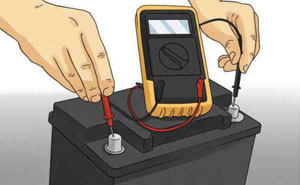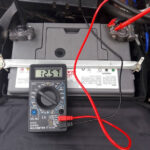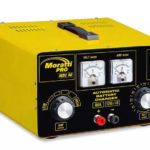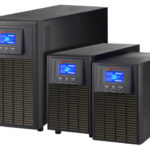A rechargeable battery is a reusable current source that operates through reversible internal chemical processes. Batteries are used for autonomous power supply of a variety of equipment. When choosing a battery for a car, other equipment or electronics, the first thing to look for is battery capacity, which is the key parameter of the device. It is important not to confuse it with charge or capacity.

What is battery capacity and how it is measured
Expressed in ampere hours (Ah), battery capacity refers to the amount of time it can supply autonomous power to equipment connected to it on a single charge. For small batteries that power electronics, a different unit for displaying capacity is mAh (milliampere-hour). In other words, battery capacity is the maximum amount of energy it can store in one full charge cycle.
The capacity of a battery is what its potential is measured in, but not its charge. You can make a comparison to a water bottle - whether it's filled with liquid or not, its volume doesn't change. In this case it is correct to compare the capacity with the volume: it does not change regardless of whether the battery is fully charged or discharged. In most cases, this figure is indicated on the battery, for example, on the sticker of a car battery written next to the starting current value.

For example: a 60 Ah car battery tells you that it can run for one hour with a load of 60 Amps and a nominal voltage of 12.7 volts (the classic voltage for most car batteries).
If you need a source of autonomous power for some equipment, how do you calculate exactly the capacity of a battery suitable for this task on your own? To do so, you need to know a few variables:
- The critical load, measured in watts (denoted P);
- the time that the battery is to power the electrical equipment (t);
- the voltage of each battery (V, measured in Volts)
- battery capacity utilization factor: 1 - 100% utilization, 0.5 - 50%, etc. (designation - k).
The letter Q indicates the necessary capacitance. To calculate it, use the formula:
Q = (P-t) / V-k
Example: Using a standard 12 V battery, 5 hours of required operation, a critical load of 500 W and a maximum battery discharge of 80%
Q= (500-5) / (12-0,8) = 260,4 Ah
This is the minimum battery capacity for the task at hand, as well as the total capacity of 12-volt batteries. But, in any case, it is better to buy a power source with a small reserve of capacity, for example, 20% more. Then it will be discharged to zero less often and the battery will "live" longer.
We have figured out what battery capacity is and how to calculate it, but sometimes, the inscription on it can lie or be absent. Or you need to compare the nameplate data and the real picture. How do you measure the capacity of a battery in this case? Ideally, you should carry out a test discharge procedure. The essence is simple: you need to replenish the battery charge to 100%, using a charger with suitable characteristics, and then completely discharge it with constant current, measuring the time spent on discharge. Next, the formula is used:
Q = I-T
where I is the constant current of discharge measured in Amperes and T is the time of discharge in hours. For example, measuring the capacity of a fully charged battery that has been running for 22 and a half hours with a constant current of 3.6 A gives a figure of 81 Ah. But it does not mean that the same battery will work more than 2 hours with a current of 36 A: an increase in current leads to a decrease in the discharge time. It is also influenced by other factors, such as the temperature of the electrolyte.
It is important to note that at the end of the discharge cycle, the minimum voltage at the terminals must not be lower than the final discharge voltage (often 10.8 volts). This is the minimum allowable value set by the manufacturer - once it is reached, the battery must be disconnected. If you often discharge the battery below this value, it can fail.
Over time, the capacity of the battery decreases in any case due to the inevitable degradation. If after measuring it turned out that the capacity is 70-80% less than the nominal, then it is time to replace the battery.
Related articles:






